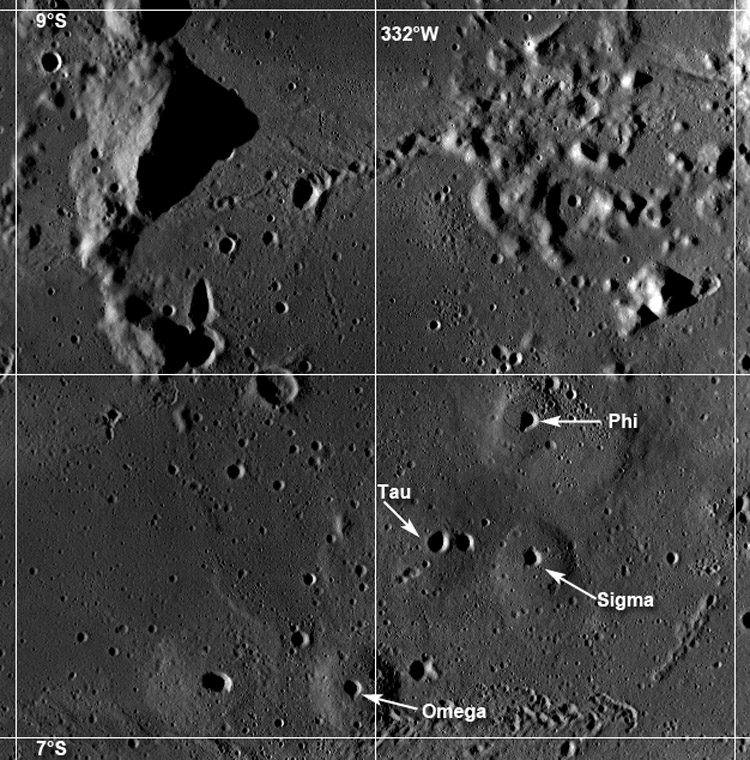July 17, 2019
Dome Heights
Originally published April 4, 2010

image from LROC Features of Interest, NASA/GSFC/Arizona State University
Although the Lunar Reconnaissance Orbiter Narrow Angle Camera (NAC) images with their 0.5 m resolution are revealing previously unknown features of the lunar surface, the Wide Angle Camera (WAC) images now being released provide a scale closer to what can be observed and imaged from Earth. This WAC mosaic of the famous Hortensius dome region provides excellent detail of the domes and nearby features (such as the secondary crater chain at top center and volcanic chain/ridge at bottom right). NAC images were obtained for at least part of this region and from stereo views a high resolution digital topographic map (DTM) was constructed for the northernmost dome Hortensius Phi, and cross sections were constructed for Sigma and Tau. It is somewhat difficult to get a precise height from the small scale cross section diagrams but it appears that all three are about 150 - 250 m high. The previous best measures were made by the GLR group who continued and extended the informal amateur system of designating domes with Arabic numbers, hence Phi, Tau and Sigma are also called H5, H3 and H4. The GLR workers determined heights of 220 m and 190 m for Tau and Sigma, respectively, in excellent agreement with the NAC-derived topography. For Phi, their value of 400 m appears to be considerably higher than the NAC height, and from the shadows and shading in the image above, Phi doesn't look like it would be nearly twice as high as the other two. Ultimately, DTM's will become available for many interesting lunar features, providing a better basis for comparing features on Moon, Mars and Earth.
Chuck Wood
Related Links
Rükl plate 30
Oblique view from Orbiter 3.
Yesterday's LPOD: Half a Basin
Tomorrow's LPOD: Hopelessly Ignored
COMMENTS?
Register, Log in, and join in the comments.



